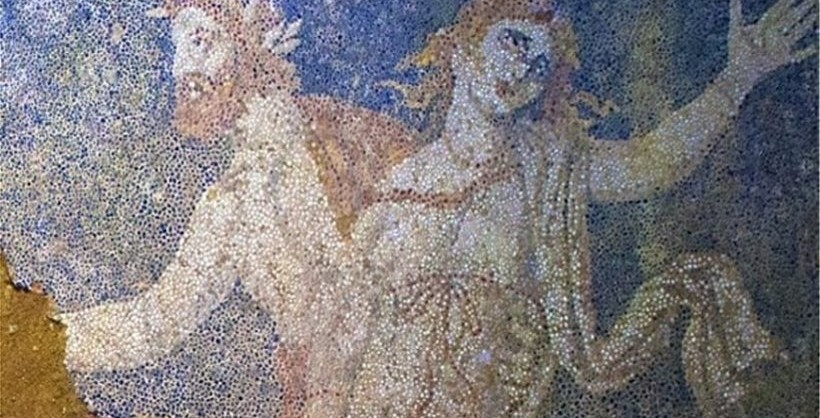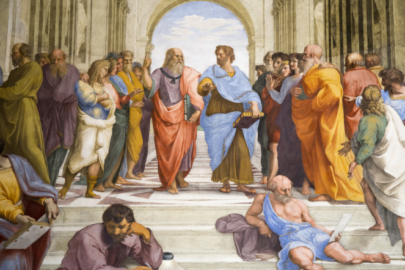The funeral theme of the floor mosaic found at the Kasta tomb, at Ancient Amphipolis, confirms the tomb is dated to the last quarter of the 4th century BC, according to the site’s chief archaeologist, Katerina Peristeri.
The mosaic depicts the abduction of Persephone by Pluto. Persephone is facing backwards (to the right), Pluto is driving a two-horse chariot and moving to the left, whereas Hermes has the role of psychopomp, escort of souls to the underworld.
The abduction of Persephone “is clearly a funeral theme,” Peristeri said, adding that “we have yet another example of dating the tomb – the last quarter of the 4th century BC” (315-300 BC).
However, the mosaic does not indicate the sex of the person who was buried there and according to Ms. Peristeri it is still early to say whether the tomb is royal. “We cannot say anything before the excavation ends. It is a very important tomb and its significance rises with the mosaic, which is the first of its kind to be found at a funeral monument.”
The mosaic, though, can be valued towards two directions: Firstly, the symbolism of mosaic which links it directly to Temenid dynasty, ie Philip II and Alexander the Great. Secondly, the artistic innovation of the design, since the artist tried to represent a third dimension in the mosaic, which makes it an innovative work.
“The theme of Persephone’s abduction is found in the wall painting of the so-called Tomb of Persephone, at the royal cemetery of Aegae”, Culture Ministry Secretary General Lina Mendoni said during a press conference yesterday.
“Pluto and Persephone, as a sacred marriage theme, are also found on the backrest of the marble throne found in the tomb of Euridice, the mother of Philip, at Aegae,” Ms. Mendoni said. The scenes related to these two “are related to cults of the underworld, the Orphic cults and the Dionysian cult practices,” she added. So, this theme was a common one depicted at the royal Macedonian tombs. Also, every king of Macedonians was also the high priest , so both Philip and Alexander the Great had a special connection with the symbols of this ancient occultism.
Also, the cost for constructing such a tomb as the one discovered in Amphipolis could be covered only by the spoils of Alexander the Great. And only a person who was directly connected with the Macedonian leader could aspire to be identified with the Temenid dynasty through this magnificent monument. As it is indirectly indicated through this mosaic, the person who ordered the construction of the tomb wanted to mark his relationship with Alexander the Great.
Moreover, only a person who could claim to be considered equal of Alexander the Great would recruit the greatest artist of that time for the decoration of the tomb, since it is clear that the artist who designed the mosaic was one of the best artists.
The particular mosaic was remarkable, the ministry said, for both its rich colours and the perfect execution of the design. It notes that the third dimension is presented in the mosaic, especially in the figures of the psychopomp and Persephone, and it is also a reference to the equivalent scene of Persephone’s abduction in the royal cemetery at Aiges.




































